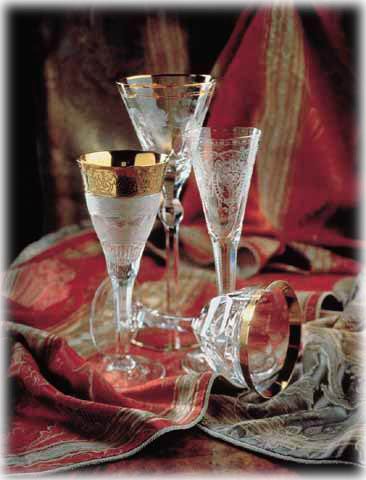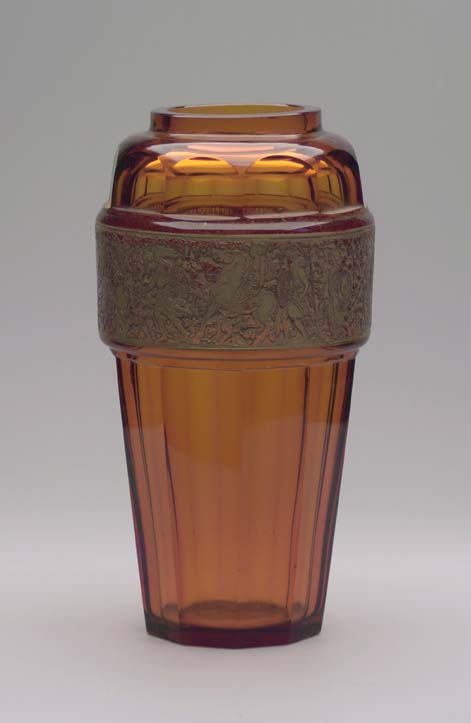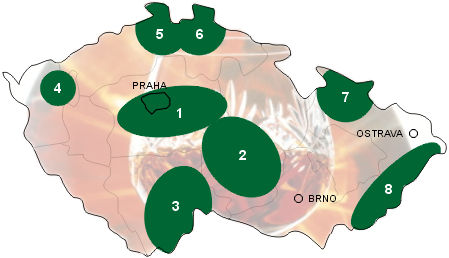Beauty and Tradition of Czech Crystal
Crystal and glassmaking are associated with the Czech Republic more than any other product. And rightly so, since Czech crystal glass, renowned for its craftsmanship and quality standards of glassmakers, glass-blowers, glass-cutters, designers and chandelier manufacturers, is unparalleled in the world.
Perhaps, no other country in the world can point to as long a tradition of glassmaking as the Czech Republic. Extensive regions within Bohemia and Moravia continue to remain centers of Czech glassmaking and manufacture. From the earliest days, Czech glass set the tone in European, and world glassmaking.
The oldest discovery of glass beads within the Czech Republic dates from the early bronze age, when this territory was populated by Celts who knew the technology of glassmaking and enamel. Archeological testimony confirms that glass beads were very popular in those times. Apparently, Benedictine monasteries were engaged in the manufacture of gla
ss as well. The range of medieval glass was surprisingly rich and includes graceful transparent glasses decorated with beads. The spectacular glass mosaic "Day of Judgment," which adorns the golden gate of St.Vitus's Cathedral in Prague, confirms the extreme delicacy and craftsmanship of medieval Czech glassmaking.

Central European (Czech) glass can be found in Corinthian excavations from the 11th and 12th centuries. These primitive glass styles spread through Italy, east to Istria and.north to Germany and Holland. At that time, the production of arts and crafts ceased to be the sole preserve of monasteries. Glassworks began to be built in forests, as workers required vast quantities of wood to feed their furnaces. The darkest and most extensive forests were colonized in this hungry quest.
These glassworks produced "forest glass" of a green shade, caused by imperfect refining of raw the materials, potash and quartz sand. Potash was gleaned from the ashes of burned wood and used as a melting material instead of soda. Potash glass is typical of this Central European area. In the 16th century, glass inspired by the Venetian Renaissance was produced for German and Italian markets.
In 1588, Emperor Rudolf the 2nd invited Mr. Ottavio Miseroni to Prague, who founded the first workshop for cutting diamonds. Miseroni's shop was the main precondition for the development of a new method of decorating glass, "engraving," which involved the cutting of glass on stone or copper wheels. The most important craftsman in Prague during these times was Caspar Lehmann, who became an Imperial Court engraver. Thus Rudolf the 2nd made himself a generous patron and Prague became the center of this new glass artcraft. From Prague it radiated outward to the whole of Europe.

During the late 1600's, engraving of glass developed very quickly and two big centers arose: Jablonec and Ceska Lipa. The traditions and skills of the glass engraver have survived in these areas until the present time.
At the end of 17th and the beginning of the 18th century, the major reputation and world recognition of Czech glass was achieved. There was strong development withon specialized Czech production, including the decorating of glass by painting, engraving and cutting. Czech glass of these times put to shame the previously favorite Venetian glass.
By the end of 18th and beginning of the 19th centuries, English, Irish and French lead crystal began to compete with Czech glass. Lead crystal was glass with a high content of lead and very suitable for cutting, as it was softer, heavier and attained an extremely high luster.
Czech glassmaking held its dominance through the early 20th century and until the Nazi invasion of 1938, when world markets disappeared in the smoke and ruin of World War Two. Shortly after the end of that war, Czechoslovakia slid silently behind the Iron Curtain, not to be heard from again until the Velvet Revolution of 1989 and the subsequent separation from Slovakia.
Just as Czech glassmaking has been influenced over the centuries by artistic trends and demands of the major European centres, the Czechs too have left a major imprint on glass production all over the world. Czech artisans worked behind-the-scenes at Waterford Crystal in Ireland, at Orrefors in Sweden, at Corning in New York, and in Germany, Austria, France, The Netherlands, and Argentina. The Swarovski glass company, famous for its crystal figurines, was founded by a Czech, as was the Shonbek chandelier company.

Caption: |
|
| Central Bohemia (1) | Moravia I (7) |
| Moravia II (8) | North Bohemia I (5) |
| North Bohemia II (6) | South Bohemia (3) |
| Vysočina (Highlands) (2) | West Bohemia (4) |
In the Baroque period, Bohemia gained a reputation for its ruby glass and "Bohemian crystal", a thick, hard, crystalline, brilliant glass. After the glass was produced in rough form in the glassworks, glassmakers ground it and typically engraved or cut it according to designs based on contemporary graphic works. The Turnov region was known for the production of glass substitutes for precious stones, a specialization that later led to the world famous costume jewellery production in Jablonec. In the Biedermeier period Czech glassmakers were skilled enough to meet the current demand for highly coloured glass. In the 1820s they carried out successful experiments with new glass-metals and ways of decorating glass surfaces. The activities of the oldest specialized glassmaking school in the world, founded at Kamenicky Senov in 1856, had a major influence in glass production.
At the turn of the twentieth century, glassmakers, inspired by Art Nouveau, decorated their work with, stylised vegetation and abstract forms. Following World War II, Czech glass won awards at many important competitions, including the EXPO 58 in Brussels. The work of designers came to be increasingly differentiated from that of artists working in the field of glass sculpture. Stanislav Libensky, Jaroslava Brychtova and Rene and Miluse Roubicek, are just a few Czech artists who reached international acclaim.
At present, Czech glass and crystal is manufactured in over 60 factories all over the country. The quality and beauty of the glass products is widely admired in markets abroad, as well as by millions of tourists visiting the country.
